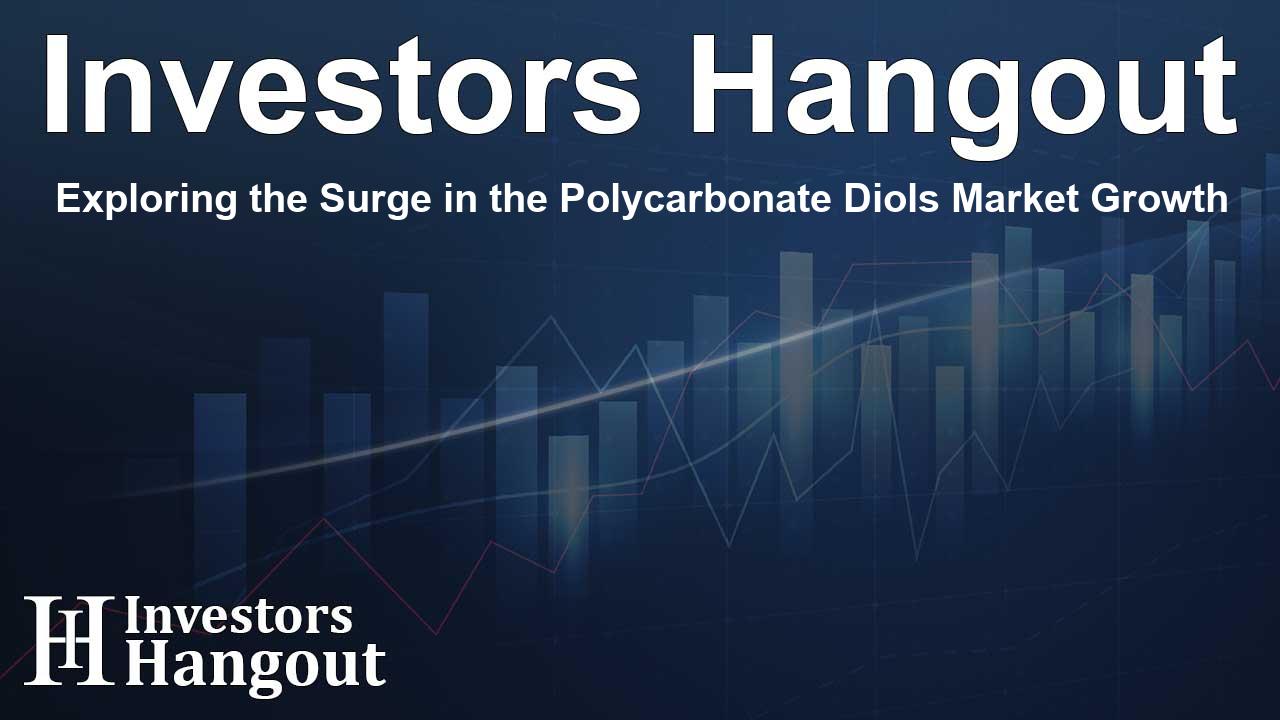Exploring the Surge in the Polycarbonate Diols Market Growth

Understanding the Expanding Market for Polycarbonate Diols
The Polycarbonate Diols (PCD) market is on an impressive growth trajectory, expected to reach USD 432.02 million as industries increasingly turn towards sustainable materials. This rise is fueled primarily by the automotive and healthcare sectors, which are exploring eco-friendly alternatives to traditional resources.
Drivers of Growth in the Polycarbonate Diols Market
As global regulations around environmental impact tighten, the demand for materials that help reduce ecological footprints is increasing. Polycarbonate diols, which serve as essential elements in bio-based polyurethanes, are gaining traction as they provide biodegradable options to petroleum-based products. This shift is crucial as more companies aim to meet these stringent regulations while addressing consumer preferences that lean toward sustainability.
Technological Advancements
Innovation plays a significant role in elevating the properties of polycarbonate diols, enhancing their durability and performance in aggressive environments. They are now being designed to meet specific industry's requirements, reinforcing their market position. The automotive industry, responding to government targets for fuel efficiency — over 50 miles per gallon by 2026 — is actively seeking lightweight, high-performance materials where polycarbonate diols fit perfectly.
Industry Insights and Key Players
Several prominent companies are shaping the landscape of the polycarbonate diols market, each contributing unique products and innovations. Covestro AG, BASF SE, and Dow Chemical Company are among those leading the charge, providing a range of solutions that cater to various applications, from coatings to elastomers. Their ongoing research and development efforts not only support market growth but also drive industry-standard advancements.
Sector Applications
Among various applications, synthetic leather has emerged as a dominant segment, holding the largest market share. This is primarily due to its increasing adoption in fashion and automotive industries, where there is a rising demand for durable yet eco-friendly alternatives. As the market evolves, the strategic focus on sustainability is likely to propel demand for polycarbonate diols in other sectors including medical devices and construction materials.
Upcoming Trends in the Polycarbonate Diols Market
An exciting trend in the PCD market is the development of bio-based polycarbonate diols that contribute to a circular economy. These materials are positioned to meet the rising consumer demand for sustainable products while providing impressive performance characteristics necessary for industrial applications. Moreover, the healthcare industry's emphasis on personalized medicine creates opportunities for advanced materials use in drug delivery systems and biocompatible applications.
Opportunities for Future Growth
The increasing production of electric vehicles marks a pivotal point in the demand for lightweight materials. As car manufacturers seek to enhance performance through reduced weight, polycarbonate diols are on the radar as a viable solution. The versatility of polycarbonate diols also opens doors in the biomedical sector, where they can be utilized for durable and safe applications in medical devices.
Regional Analysis of the Polycarbonate Diols Market
Asia Pacific stands out as a leader in the polycarbonate diols market, accounting for nearly 48% of the share in recent years. The region's rapid industrialization and strong automotive production capabilities are key drivers, combined with a growing consumer base that prefers sustainable materials. As manufacturers ramp up their production capabilities, PCD products are set to gain increased visibility across various industries in this region.
Looking Ahead: The Future of Polycarbonate Diols
As the demand for eco-friendly materials continues to soar, the Polycarbonate Diols market is well-positioned to expand even further. With a projected growth rate of 5.3% from 2024 to 2032, industries are expected to embrace these materials more widely. The combination of technological advancements, changing consumer preferences, and regulatory pressures creates a favorable landscape for polycarbonate diols in the years to come.
Frequently Asked Questions
What are polycarbonate diols and their applications?
Polycarbonate diols are versatile materials used primarily in bio-based polyurethanes, which find applications in coatings, adhesives, and medical devices.
How is the polycarbonate diols market expected to grow?
The market is projected to grow at a CAGR of 5.3% from 2024 to 2032, reaching USD 432.02 million, largely due to increased demand in automotive and healthcare sectors.
What companies are key players in this market?
Major companies include Covestro AG, BASF SE, and Dow Chemical Company, each offering innovative solutions and products related to polycarbonate diols.
Why is sustainability important in the polycarbonate diols market?
Sustainability is vital as industries seek to reduce their environmental impact, and polycarbonate diols offer renewable, biodegradable alternatives.
Which regions are leading in the polycarbonate diols market?
Asia Pacific is currently leading the market, with significant shares attributable to rapid industrialization and increasing demand for eco-friendly materials.
About The Author
Contact Thomas Cooper privately here. Or send an email with ATTN: Thomas Cooper as the subject to contact@investorshangout.com.
About Investors Hangout
Investors Hangout is a leading online stock forum for financial discussion and learning, offering a wide range of free tools and resources. It draws in traders of all levels, who exchange market knowledge, investigate trading tactics, and keep an eye on industry developments in real time. Featuring financial articles, stock message boards, quotes, charts, company profiles, and live news updates. Through cooperative learning and a wealth of informational resources, it helps users from novices creating their first portfolios to experts honing their techniques. Join Investors Hangout today: https://investorshangout.com/
The content of this article is based on factual, publicly available information and does not represent legal, financial, or investment advice. Investors Hangout does not offer financial advice, and the author is not a licensed financial advisor. Consult a qualified advisor before making any financial or investment decisions based on this article. This article should not be considered advice to purchase, sell, or hold any securities or other investments. If any of the material provided here is inaccurate, please contact us for corrections.
